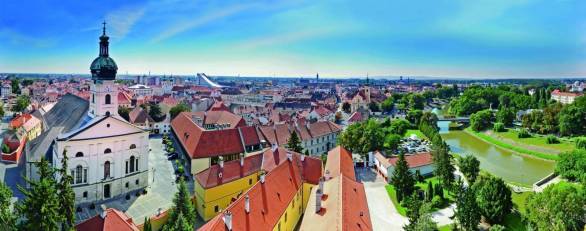Church of the Apostles St Peter and St Paul
The church and its parish were first mentioned in a 1332 papal decree. The parish’s re-independence (Záhorská Bystrica was a branch of Stupava for a time) was linked to the settlement of the Croatian ethnic minority. The church’s construction in 1534 can also be explained by the rapid growth in population. The St Peter’s Chapel was converted into a larger church, and its patronage was extended to St Paul. The construction of a new, large-scale parish church began at the end of the 18th century. This was consecrated by the suffragan bishop of Esztergom in 1834. The Church of the Apostles St Peter and St Paul is a single-naved building with Baroque and Classicist style marks, enclosed by a rectangular apse. The nave is 20.8 metres long, 10.7 metres wide, with three Prussian mitred vaulting panes forming the roof, whose beam structure is supported by double pilasters topped with corniced chapiters while the corners rest upon broken pillar chapiters. The gallery built along the western wall of the church’s nave is supported by two columns. The nave’s interior is illuminated by six large windows while there are four stained-glass windows in the apse. The apse is 10.46 metres long, 8.3 metres side and 15 metres high and its floor is one step higher than the nave. The floor of the church’s interior is covered by obliquely laid, square split-stone slabs. The defining elements of the central, gilded tabernacle of the altar are wooden carvings depicting the apostles St Peter and St Paul. There is a statue of St Wendel on the left and one of St Florian on the right. The relief depicting the events of the life of the Virgin Mary on both sides of the tabernacle and the reliefs below the altar stone depicting the High Priest Melchizedek and his son Isaac offering up their sacrifice to Abraham also merit attention. The pulpit dating from 1927 is located on the left side of the chancel arch. This is the work of the Tyrolean Master Rungaldier and depicts the four evangelists along with their attributes.

